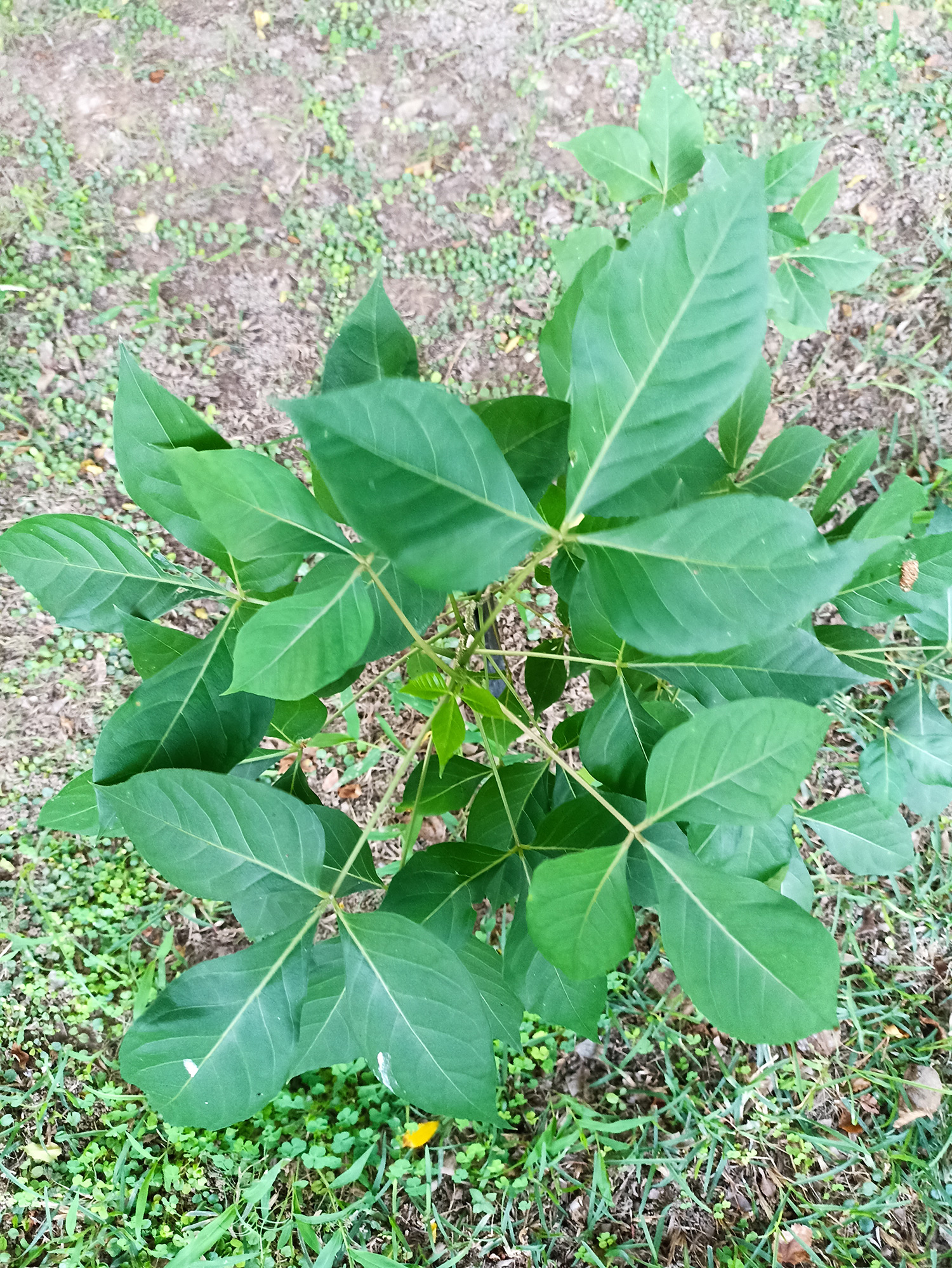Flacourtia indica/ sapida
Species
Families
Local Names
Genus
Native/Introduced
DNA Barcode
Description
Flacourtia indica (syn. Flacourtia ramontchi), known commonly as ramontchi, governor's plum, Madagascar plum and Indian plum, is a species of flowering plant native to much of Africa and tropical and temperate parts of Asia. F. indica and F. ramontchi are sometimes treated as separate species.
This is a bushy shrub or tree with a spiny trunk and branches. In shrub form it grows up to 25 feet (7.6 m) and as a tree it reaches a maximum height around 50 feet (15 m). The drooping branches bear oval leaves. The seeds are dispersed by birds. This tree has thorns similar to that of a lime or lemon tree. If in contact with the thorns, it leaves a nasty stinging pain. F. indica is a species of small tree or shrub native to Africa and Asia. It has been introduced fairly widely and is regarded as a major invasive plant. It invades disturbed areas, forest edges or clearings and riparian zones. It has been most widely recorded as invasive in islands in the Western Indian Ocean to varying extents. F. indica is considered very invasive in Mauritius but less so on Reunion, Rodrigues and Mayotte where monitoring is recommended. Similarly, it has been recorded as an invasive species ‘to be watched’ in Florida. While present and introduced in various Pacific and Caribbean islands, information on invasiveness in this area is scarce. It has however been reported that this species can form dense impenetrable thickets which may inhibit the growth of native plant species.
Relatives
This section does not cite any sources. Please help improve this section by adding citations to reliable sources. Unsourced material may be challenged and removed. (October 2021) (Learn how and when to remove this template message)
The family Salicaceae includes well-known species such as kei apple (Dovyalis caffra) louvi (Flacourtia inermis), paniala (F. jangomas), and rukam (F. rukam).
Uses
The ramontchi fruit itself is a pome about an inch thick and red ripening purple. It is very fleshy and has 6 to 10 seeds in layered carpels. The pulp is yellow or white and sweet with an acidic tang. It is eaten raw or made into jelly or jam. It can be fermented to make wine. The leaves and roots are used in herbal medicine for treatment of snakebite. The bark is believed to be effective for arthritis. Most parts of the plant are used for cough, pneumonia, and bacterial throat infection. It has also been used for diarrhea.
The tree is planted as a living fence; it was one of the species used for the Indian Inland Customs Line. The wood is used for firewood and small wooden tools such as plow handles.
F. indica is valued widely for its edible, acidic to sweet fruit. Ripe fruit are eaten fresh or used for preserves, jams, sauces and jellies. The fruits can also be fermented and used to make alcoholic beverages. The flavour is variable from sweet to sour and the fruit can be found in the local markets in Africa. The leaves are eaten as a vegetable in Madagascar and leaves and bark are thought to be used as flavouring in the making of rum.
This species also has a wide range of medicinal uses. It is an important ayurvedic drug in India. The leaves can be used as sedatives and are also useful for asthma and some gynaecological problems. The leaf-sap is used for diarrhoea and infantile fevers. The bark is used as a painkiller and in combination with leaves for naso-pharyngeal affections and pulmonary troubles. A root decoction in combination with the leaf-sap is taken for schistosomiasis, malaria and to relieve body pains. The bark is used for rheumatic pain and as a gargle for hoarseness.
The timber is very hard and heavy and is used as rough lumber and to make charcoal. The tree is planted as an ornamental and living hedge. In India the branches are lopped for fodder and in a number of places it is planted to form impenetrable hedges or windbreaks. Although slow growing, it responds well to coppicing and is used as a source of firewood.
Cultivation
The plant is known as an occasionally invasive introduced species in some areas. It has been cultivated in Florida in the United States and today it occurs as a weed in some parts of the state.









































































































































